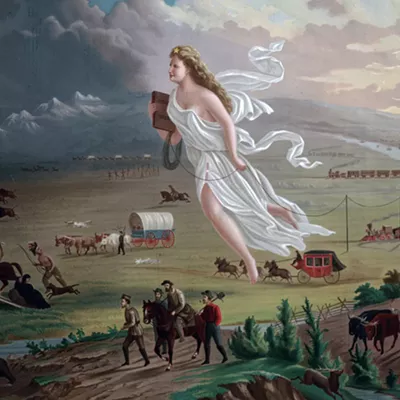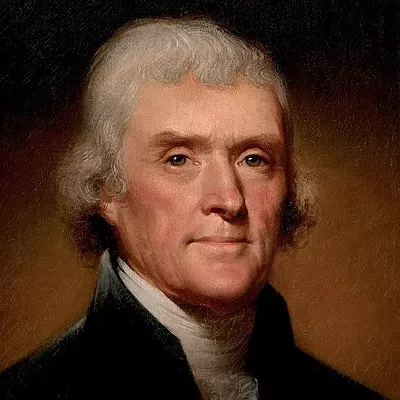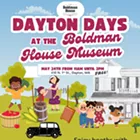Bonnie Raitt's run of success that began with her 1990 hit album Nick of Time has brought obvious benefits to her career - including financial wealth, critical acclaim and industry awards that have made her one of the most honored and respected artists in rock over the past decade.
But Raitt, who has toured and recorded steadily since the release of her self-titled 1971 debut album, says her breakthrough has brought another benefit that has had a direct result on the music she continues to write, record and perform: time to relax and time to travel. Still, she will make time to perform at the Gorge this Friday with Lyle Lovett.
"I spent the year 2000 both having a great time at home and visiting family after two years on the road, and I also wanted to go to Africa to see where this music is from," Raitt says. "I went [to Mali in West Africa] for three weeks in that January. Then I went on to Cuba. And I've been to Ireland four or five times now for lengthy stays."
Raitt's interest in world music, particularly African styles, reggae and Celtic music, extends back to the early 1970s. But now it's begun to surface as a significant part of her stylistic arsenal.
Her latest CD, Silver Lining, features a cover of Zimbabwean artist Oliver Mtukudzi's song, "Hear Me Lord," as well as a collaboration between Raitt and another leading African artist, Habib Koite, on "Back Around," a song recorded with Koite's band that uniquely fuses raw traditional blues and syncopated African music.
Raitt is calling Silver Lining one of her best - and perhaps her most important CD -- to date.
"I think it's a really a special record. I think in retrospect when history looks back on it, it will be one of the most important ones I've made," Raitt says "Certainly for me, every time I make a record, it's the best one I've done."
The music on Silver Lining supports Raitt's feelings about her efforts. As she mentions, her signature blues remain a central part of the new album on tunes like "Fool's Game," which has a bit of Little Feat's greasy groove, the deeply funkified "Monkey Business" and "Gnawin' On It," a collaboration between Raitt and blues guitarist Roy Rogers.
Raitt also wraps her expressive voice around a pair of melodically elegant, emotional ballads, "I Can't Help You Now" and "Wherever You May Be" that build on the tradition of previous Raitt classics like "I Can't Make You Love Me" or "Nick of Time."
The excursions into more multicultural territory on her earlier album Fundamental and Silver Lining have coincided with a decision by Raitt to shake up her approach to recording.
For Fundamental, she parted ways with producer Don Was, instead teaming up with producer Mitchell Froom and engineer Tchad Blake (a duo known for their sonically adventurous work with Los Lobos and Richard Thompson).
"I had made four albums with the same team of people," Raitt says. "It's not that I was unhappy working with them. I just think any time you run the risk of repeating yourself, it's good for us as musicians and it's good for my fans to be able to see what new energies and new combinations (of musicians) would do."
Raitt established that willingness to try new things from the outset of her career, both on her 1971 self-titled debut and the 1972 album, Give It Up. Raitt continued to be a steady presence over the next two decades, with a series of albums that ranged from very good (1975's Home Plate and 1982's Green Light) to uneven (1979's The Glow). Throughout those years, Raitt earned plenty of acclaim for her singing and slide guitar playing, yet only could build a modest, if loyal, following.
But after kicking a long-standing drinking habit in the 1980s, Raitt signed to Capitol Records in the 1990s and made Nick of Time, which went multi-platinum and won four Grammy awards. She has maintained her popularity and critical standing ever since, hitting one particularly notable high point in 2000 when she was inducted into the Rock and Roll Hall of Fame. That honor, says Raitt, has special meaning.
"Let's just say I wouldn't have expected to get in this soon, but I have been around the block here for a long time, and there aren't that many women they haven't honored," she says. "So I was thrilled to make the cut. And because it's voted on by my peers, I was really honored. And then when I went to see my exhibit in the actual museum, I was shaking my head and going 'How did this happen?' It's really like a Cinderella story every time I get some kind of acknowledgement."
Rush Hour
If Rush's new album, Vapor Trails, seems like a surprisingly personal record, it's not a figment of anyone's imagination.
The band's lyricist, drummer Neil Peart, has always been known for cerebral, philosophical and abstract lyrics. But on Vapor Trails, Peart didn't separate his lyrics from his life, as this song cycle became a chronicle of loss, of grief, and finally spiritual renewal. Rush fans will hear these new songs as well as old Rush classics this Saturday at the Gorge.
In 1997, shortly after completing a tour in support of Test for Echo, Peart's 19-year-old daughter, Selena, was killed in a one-car accident near Brighton, Ontario. About a year later, his wife, Jackie, succumbed to cancer.
"Well you know Neil is not a very public person. He's extremely private," says Rush guitarist Alex Lifeson. "Even with his lyrics he's never been very open on a personal level. With this record, it's really all about that. The record's all about recovery and it's all about hope."
Lifeson says that in the aftermath of the back-to-back tragedies in Peart's life, any considerations about the band were pushed aside as he and the other member of Rush, singer/bassist Geddy Lee tried to help Peart cope with his grief.
"We were there for him always. We didn't speak to him perhaps on a weekly basis, but whenever he needed us, he reached out to us and we were there for him," Lifeson says. "Certainly in the awful, terrible time shortly after Selena's death, his daughter's death, we were all there every day, supporting him and trying to keep him going. That was extremely difficult."
Lifeson admits there were times he and Lee wondered if Rush would ever be a band again. After all, Peart had completely set aside music in the aftermath of the tragedy, eventually going four years without even playing drums.
And as the band hiatus continued, both Lee and Lifeson looked to outside projects to remain involved in music.
Lee went to work on his first-ever solo album, the 2000 release My Favorite Headache, and eventually went on a short promotional tour to support the CD.
Lifeson, meanwhile, took the opportunity to try his hand at producing, doing the debut album for the Pennsylvania-based band Lifer, as well as a few yet-to-be-released tracks for 3 Doors Down.
Peart, meanwhile, began to find new light for his life when he met his second wife and remarried in 2000. By the fall of that year, he was ready to return to the studio with Lifeson and Lee, and in January 2001, they began work on the new CD.
The making of "Vapor Trails" was a long, although fairly smooth process, according to Lifeson. But it took the trio some time to hit their stride.
"We spent 14 months on the record, and that was a very long time for us." Lifeson says. "But it was great not putting any kind of deadline on making the record. It was going to be finished when it was right and ready." The album that emerged contains some of the rawest, hardest-rocking performances of any Rush album, while still showcasing the intricate interplay between Lifeson's guitars, Lee's bass and Peart's precise drumming.
The opening cut, "One Little Victory," opens with Peart's pounding drums, before charging out behind Lee's rumbling bass line and Lifeson's serrated guitars. Songs like "The Stars Look Down," "Peaceable Kingdom" and "Ceiling Unlimited" carry forward a similarly urgent, hard-hitting sound that fits the angular melodies of these songs.
Lifeson says the process of making Vapor Trails has helped energize the three band members, and he particularly admires Peart for the way he has come through such a difficult period in his life.
"I think he's derived a lot of strength from making the record," Lifeson says of Peart. "I think he's proud of the fact that he was able to do it, you know going into it, baby steps, and coming out full stride. He'll always be scarred by what's happened, and he's definitely a changed person. He's softer in some ways. But I think he's learning to really enjoy life again and he's committed to starting from scratch. That's all you can do."
-- Alan Sculley
Get the Blues
Terry Robb embodies the traditional spirit of the blues. He has a voracious appetite for the classics and at the same time vision beyond the norm, technical ability, and prowess to take blues to a whole different place. The Met Theater will be that place on Saturday, Sept. 14.
Brought up in a house laden with music, Robb was exposed to many different styles at a young age. However, it was a Ray Charles television performance one evening that compelled him to "get the blues."
Robb spent his adolescent years absorbing music of all types, even dabbling in bands as early as at the age of 13. The sounds of blues greats like Mississippi John Hurt, B.B. King and John Lee Hooker swirled around Robb's impressionable young mind and shaped his music.
These experiences and an undying devotion to blues music have shaped Terry Robb into one of the most recognized and accomplished blues guitarists in the country. He has been given the Cascade Blues Association's annual "Muddy Award" thirteen times and has been named a two-time "Hall of Fame" member.
Robb has a rap sheet of collaborations that reads like a roster for an all-star blues extravaganza. He worked with Curtis Salgado on a CD project called "Hit It And Quit It" which led to a successful national tour playing with Buddy Guy and Steve Miller.
Robb also worked as a producer and performer for famed avant-garde musician John Fahey.
With three albums and his impressive resume in tow, Robb's experience and musicianship have culminated in his latest album, When I Play My Blues Guitar. The album incorporates flawless technical ability coupled with emotive vocals. As prolific on the guitar as Robb is, he also has a knack for production. He has performed on and produced all of his own records and also lent his producing expertise to fellow Burnside Records artists, including local favorite and Burnside counterpart Paul Brasch.
When Robb isn't performing, recording, producing or otherwise engaged, he finds time to give a little back. Last year he opened the Terry Robb Northwest School of Acoustic Guitar. The school offers courses in a college-style setting, complete with written material, CD format lessons and hands-on instruction for intermediate and advanced players.
Blues enthusiasts have been fortunate recently to have national blues acts come to the area. This is a must-see show for the die-hard blues man. Robb's performance at the Met will be coupled with a guitar clinic at Guitar Center on N. Division in the Franklin Park Mall. Pickin' and grinnin' will be provided. -- Clint Burgess















